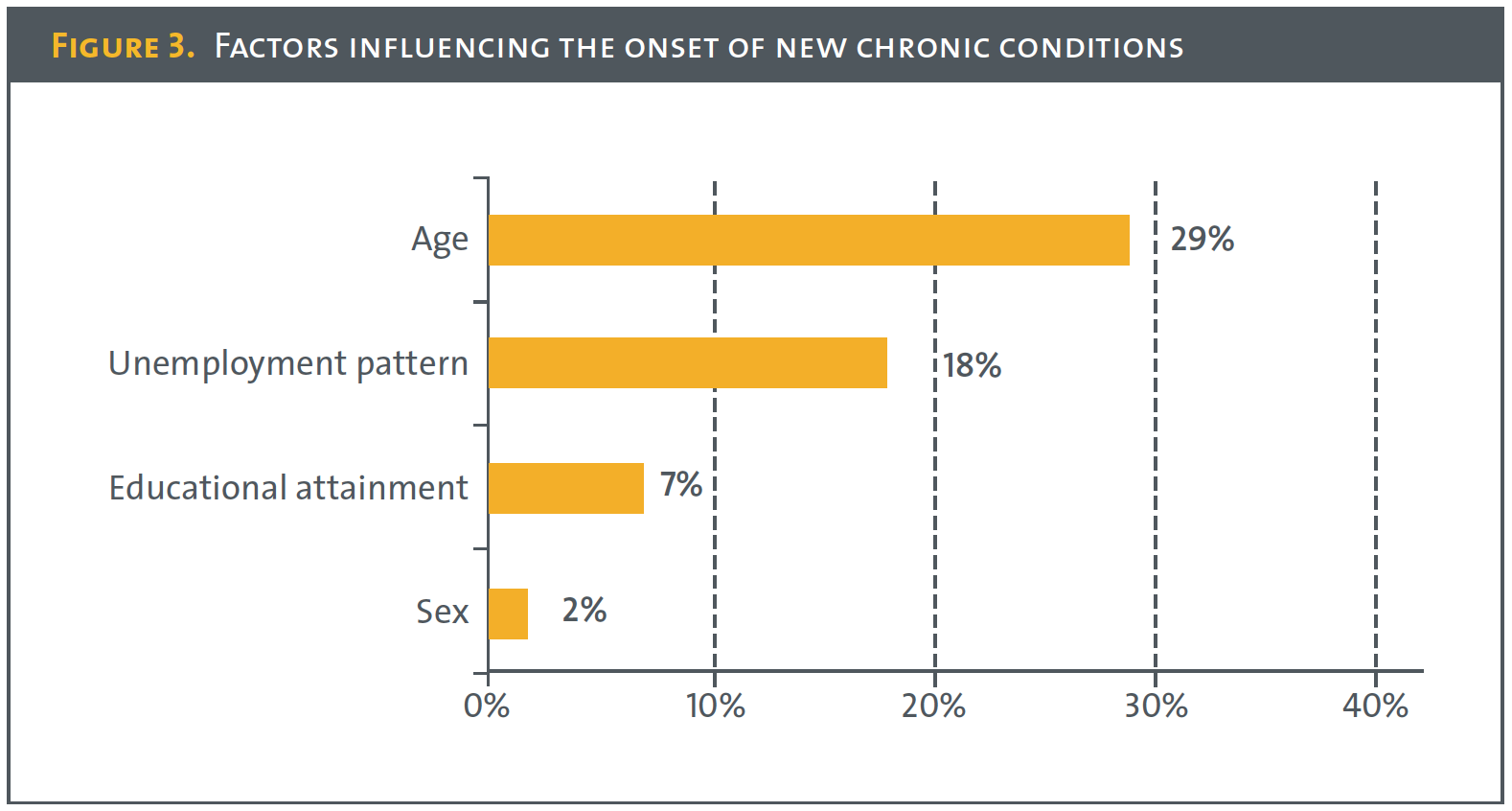Welfare state

Despite substantial aggregate evidence in support of the relationship between welfare regimes (i.e., the integrated mix, at the national level, of systems that provide social protection, including unemployment insurance) and health and/or poverty across wealthy countries, the specific mechanisms by means of which welfare regimes have an impact remain invisible. There is thus a large knowledge gap regarding the range of welfare policies and interventions that have the potential to reduce health and social inequities.
Main findings
Generous unemployment insurance policies reduce material hardship and psychological distress for the unemployed
The generosity of unemployment insurance in regards to eligibility, duration and wage replacement levels can reduce poverty, material hardship and psychological distress among the unemployed. Such policies have the ability to moderate harmful consequences of unemployment (4).
Generous family support policies are predictive of reduced child poverty levels.
Our realist review of literature found that generous family support policies (FSP) reduce child poverty because they support and increase the freedom of parents to ensure that their children have access to basic opportunities. Family support policies include the following: job-protected leave, which enables new parents to retain their paid employment status after childbirth (i.e. parents have the legal right to keep their jobs); public childcare, which offers affordable options for parents (i.e. children receive inexpensive or subsidized care during work hours); paid leave, which replaces lost income (i.e. parents receive a benefit sum in proportion to their gross earnings); and cash transfers, which offset the material costs of raising children (i.e. parents receive tax-free family payments or allowances). Moreover, child poverty is lowest when FSP are comprehensive, universal (i.e. available to everyone) and packaged as 'dual-earner policies' (i.e. available for both parents) (5).
(1). Muntaner C. Invited commentary: On the future of social epidemiology - a case for scientific realism. Am J Epidemiol. 2013; 178:852-7.
(2). Ng E, Muntaner C. A Critical Approach to Macrosocial Determinants of Population Health: Engaging Scientific Realism and Incorporating Social Conflict. Curr Epidemiol Reports. 2014; 1:27-37.
(3). Molnar A, O'Campo P, Ng E, et al. Protocol: realist synthesis of the impact of unemployment insurance policies on poverty and health Eval Program Plann. 2015; 48:1-9.
(4). O'Campo P, Molnar A, Ng E, et al. Social welfare matters: A realist review of when, how, and why unemployment insurance impacts poverty and health. Soc Sci Med. 2015; 132:88-94.
(5). Ng E, Julià M, Muntaner C, et al. Family support policies and child outcomes: A realist-scoping review. Forthcoming.
Health improves as states increase spending on active labour market policies
Unemployment, a major cause of chronic illness.
Using a multilevel, longitudinal EU-wide analysis, we examined the effects of short-term and long-term unemployment as well as unemployment insurance generosity on health. We found that unemployment insurance system generosity was not associated with health in the total sample. However, the longer individuals were unemployed, the worse their health turned out to be. In particular, almost one-fifth of new onset chronic conditions (18%) were attributable to unemployment patterns, a factor which was also found to be more influential than sex and educational attainment (7).
(6). Hwang J, Ng E, O'Campo P, et al. Associations between labour market expenditures and self-rated health: A pooled cross-sectional analysis of 20 European nations and 5 welfare regimes. Forthcoming. PPT.
(7). Shankardass K, Mc Isaac KE , Shriqui VK, et al. Effects of employment pattern and generosity of the safety net for workers on self rated health across the EU: a multilevel, longitudinal analysis. Forthcoming.
Efforts to oppose cuts to social protection are successful when the affected group is politically powerful
(8). Mitchell C, Freiler A, Muntaner C, et al. Opposition efforts to fuel poverty cuts: An explanatory single-case study. Forthcoming.
Policy implications
Health benefits can arise from increases in unemployment insurance generosity, specifically by:
- ensuring that the majority of unemployed individuals receive unemployment benefits;
- ensuring the use of flexible eligibility criteria that take into account different types of work and work situations including: seasonal work, reduced hours and self-employment;
- ensuring an adequate income replacement rate that meets the cost of living for a healthy life;
- ensuring short or no waiting periods between the time of job loss and receipt of unemployment insurance benefits;
- providing unemployment insurance benefits for the whole duration of unemployment.
Policy interventions that maintain employment and rapidly put the unemployed back into the workforce can reduce the burden of chronic conditions in European health care systems.
Increased spending on active labour market policies can result in improved health among the population.
Research team
Work Package 2 (Welfare regimes and social protection policies) has been led by Patricia O'Campo and Carles Muntaner, Centre for Research on Inner City Health.
Other partners involved were Universitat Pompeu Fabra, PJ Šafárik University in Košice, Agència de Salut Pública de Barcelona, Vrije Universiteit Brussel and University of East Anglia.




